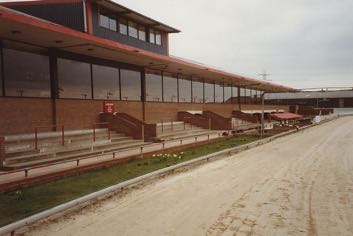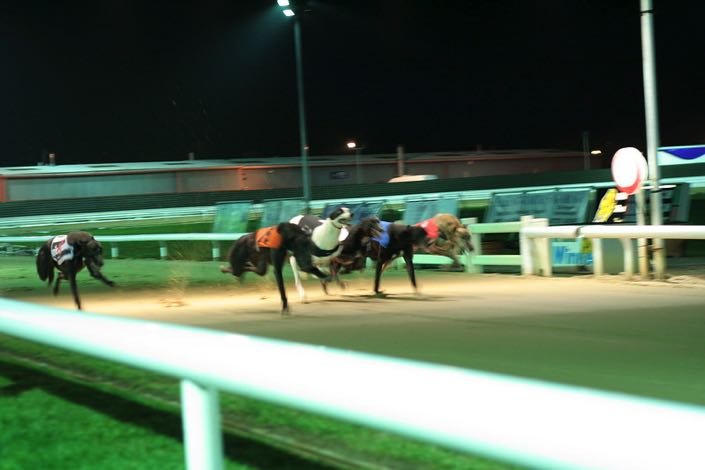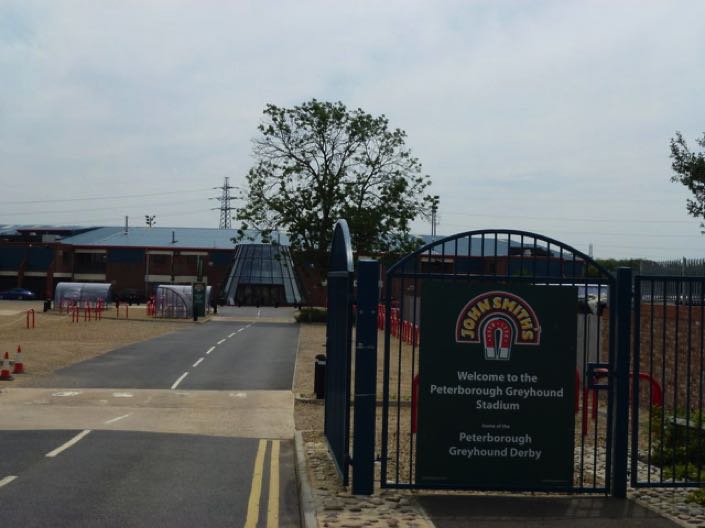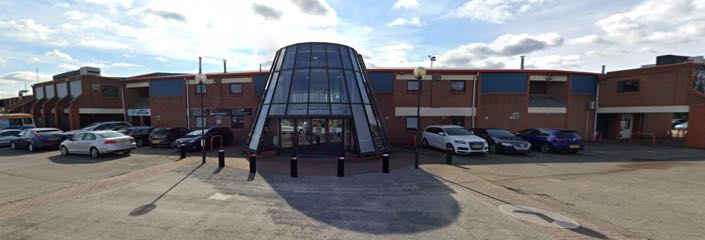- Address: 141 Fengate, Peterborough PE1 5QA
- Status: Permanently Closed

The Liberty of Peterborough comprised around 30 parishes and was an historic area of the city. In 1931, it was announced that the Peterborough Racing Club would be opening a new greyhound track in the Liberty, off the Fengale Road. Racing took place for the first time on the fourth of April that year, with the first ever dog winning a race being one called Dewdrop. A record crowd of 400 was recorded two days later, with capacities increasing year-on-year. Racing was held on Wednesdays, Fridays and Saturdays, with a number of big races taking place at the venue.
When racing stopped because of the global health crisis, the owners of the track in Peterborough decided that it would not re-open when other tracks began doing so. The financial impact of racing without crowds in attendance was too much for the owners to take on, so they felt it made more sense to just not re-open. It means the loss of a venue that had operated greyhound racing for more than 75 years, which at its peak employed 180 workers, of whom 25 were full-time. In 2021, it was sold to Fengate Land Holdings.
Major Races & Events

As with most greyhound venues around the country, Peterborough Stadium played host to a fair few standout races. The majority of these were specific to the area, with the following being the most notable ones:
- Peterborough Marathon
- Peterborough Derby
- Peterborough Cesarewitch
- Fengate Collar
- Veterans Derby
In the News
Given the fact that Peterborough Stadium announced that it would not be re-opening in 2020, you can understand why most of the news stories since then have been about the goings-on at the venue. In 2021, for example, confirmation of the sale of Peterborough Greyhound Stadium to Fengate Land Holdings, a Peterborough-based company, was confirmed. Early in 2022, the Peterborough Telegraph ran a story looking back at the dramatic fire that happened at the dog track in 1999, which is one of the most recent news pieces.
About the Peterborough Greyhound Stadium

Built around a mile from the centre of Peterborough, Peterborough Greyhound Stadium opened its doors for the first time in 1931. Located in the Liberty of Peterborough, an historic area of the city, it was operated by Peterborough Racing Club. The land chosen was just to the north of the Peterborough Corporation Sewage Pumping Station and there were 12 races on the opening night, Saturday the fourth of April. Racing took place every Monday and Saturday, mainly comprised of greyhounds and whippets, under the management of G Hooke.
Racing at Peterborough continued up until the outbreak of the Second World War, with capacity steadily increasing with each meeting. This was in spite of the fact that the facilities were very basic, not least of all thanks to the hare being moved around the track courtesy of two people cycling. In the wake of the war, the track was purchased by Reg Perkins, a member of a farming and transportation family, and George Ellingworth, a garage owner. They bought the track in 1945, which was well-timed considering the fact that greyhound racing hit its peak the following year.
Changes Happen
One of the first things that Perkins and Ellingworth did was to look to improve the facilities at the stadium. In 1947, the totalisator at the track had a turnover of £49,719, so there was enough money to allow them to do it. It was known as the Peterborough Sports Stadium at the time, which Perkins took sole control of when Ellingworth died several years after the pair bought the venue. It was an independent track, meaning that it was run separate from the National Greyhound Racing Club, yet was still very popular with the locals.
As well as the likes of photo finish apparatus and the installation of an Outside Sumner hare, the track’s major draw were the licensed bars and on-course bookmakers. The presence of the stadium led to an improvement of the surrounding area, with industrial units springing up all around it. When Reg Perkins retired in 1977, the running of the track moved to his two sons, Rex and David. Tuesdays and Saturdays became the major racing days, with events run over 275 yards, 475 yards and 675 yards, with nine on-track bookmakers.
The Track Becomes a Licensed One
The biggest change to Peterborough Greyhound Stadium came about five years after Reg Perkins’ death, when the decision was taken to join the NGRC’s permit scheme. That meant that races could be run under rules, but because the track was smaller than others it paid a reduced rate to do so. It was something to a catalyst to improve the stature of the track, with the Peterborough Derby being inaugurated the following year. It was a popular event, seeing the venue’s reputation grow in the years that followed. This was helped by Rex Perkins becoming the Mayor of Peterborough in 1987.
Having become part of the National Greyhound Racing Club, even if only thanks to the permit scheme, Peterborough Greyhound Stadium had the finances to be able to improve areas of the venue. In 1988 a new grandstand was built, containing a restaurant that had a view of the course for the 200 covers that were in it. Irishman, John ‘Ginger’ McGee Senior, joined the track three years later, winning the Greyhound Trainer of the Year award. When a fire broke out in an adjoining warehouse in 1999, severe damage was suffered in the main stand.
Further Developments
In 2003, Rex Perkins died after suffering a long illness. The running of the track was taken over by his son, Richard, and his nephew, Rob, who dedicated a new £3 million extension of the main stand to him. There was now enough room for 1,000 spectators, with corporate boxes also added to provide an additional income.
Five years later and a decision was taken to drop the racing on a Tuesday night, with the stadium being given a Bookmakers Afternoon Greyhound Service contract in 2012. Two years on, the venue became the BAGS National Champions. A deal was signed with Arena Racing Company in 2018, part of which saw racing take place on Wednesday evenings.
The Track & Facilities
Having first opened its doors in the 1930s, it is hardly a surprise to suggest that Peterborough Stadium wasn’t the most modern around. Not that it had remained unchanged since those first days, of course. In 1988, for example, a local architecture firm, T. E. Titman Associates, produced plans for a new grandstand and restaurant, which cost more than £500,000. The Raceview Restaurant had a capacity to seat 200 patrons, with a further 600 seats made available in the glass-fronted grandstand, offering excellent views of the track.
Another renovation was carried out in 1999 after the fire broke out in the adjoining warehouse. In 2003, £3 million was spent on extending the grandstand by about 200 feet. It had been kept up-to-date, therefore, making it as impressive as many of the greyhound venues around the United Kingdom. Using an Outside Swafham hare, the track was 370 metres in length, with the distance to the first bend being 80 metres.
Records at Peterbrough
It boasted the following race lengths, along with their records:
| Distance | Record Time | Date Set |
|---|---|---|
| 235 Metres | 13.95 Seconds | 9th October 2010 |
| 250 Metres | 14.80 Seconds | 31st May 2019 |
| 420 Metres | 24.88 Seconds* | 6th August 2011 |
| 435 Metres | 25.68 Seconds | 18th October 2017 |
| 605 Metres | 37.10 Seconds** | 12th September 2009 |
| 620 Metres | 37.79 Seconds | 23rd November 2018 |
| 790 Metres | 49.61 Seconds | 14th May 2005 |
| 805 Metres | 50.68 Seconds | 16th November 2016 |
| 975 Metres | 63.15 Seconds | 7th January 2008 |
| 420 Metre Hurdles | 25.85 Seconds | 17th May 1997 |
* This record was set in the final of the Peterborough Derby
** This record was set in the final of the Puppy Cesarewitch
Located around a mile from the centre of the city of Peterborough, the greyhound track had an ample car park and enough room for around 1,000 spectators.
The Closing of the Track: What Happened to Peterborough Greyhound Stadium?

Alongside all other greyhound racing venues, the track closed when the global health situation required it to do so in 2019. When the rest of racing opened back up in May of 2020, a decision was taken not to re-open Peterborough Greyhound Stadium. Initially, the owners said that they wanted clarification from the Greyhound Board of Great Britain about what the plans were for crowds. When it was confirmed that racing would take place behind closed doors, a decision was taken to close the track permanently.
The family pointed out that the venue depended on the money made from sales of food and drink, as well as the Tote, in order to survive. Without customers and with the likelihood of measures such as social distancing being introduced, it was not possible for the track to continue in any meaningful capacity. A statement from the family said,
This is a decision that has not been taken lightly and has been taken in conjunction with and on the advice of our accountants. Long term, we are advised that the site cannot make a sufficient return to continue operating profitably as a greyhound racing stadium.
The Perkins family made reference to the ‘heavy heart’ that they felt in choosing to close the stadium, putting on record their thanks for all of the owners and trainers that had worked with the venue over the years. The sadness was a sentiment that was echoed by Mark Bird, the Managing Director of the GBGB, who said,
We are extremely saddened to hear the news that Peterborough Greyhound Stadium is to close. It is a long established, family run track run by the Perkins Family since 1945 that has served its community throughout all that time and holds incredible, long lasting memories for racing fans throughout the country.